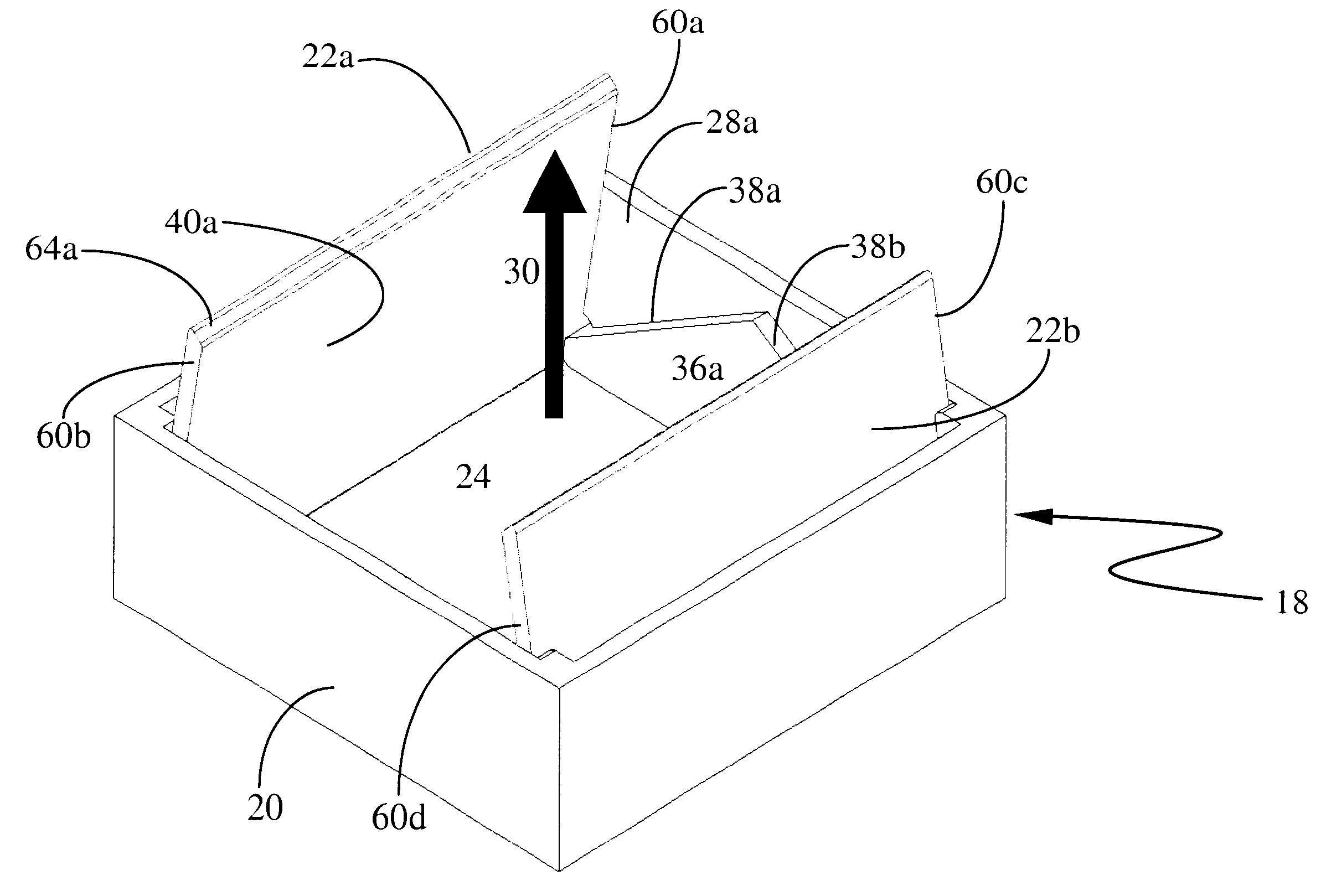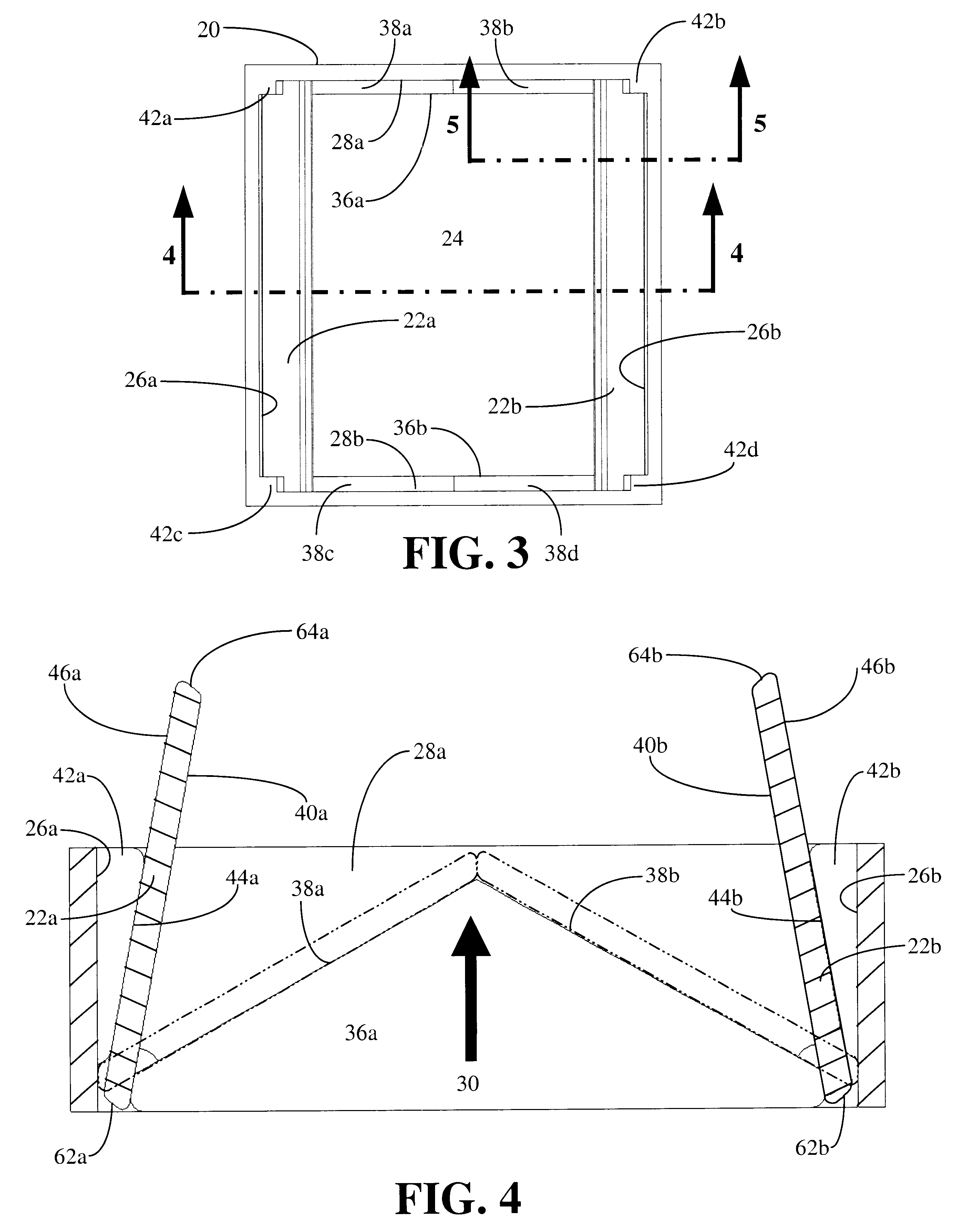Heart valve with rectangular orifice
a heart valve and rectangular technology, applied in the field of mechanical heart valve prostheses, can solve the problems of obstructing the central flow of blood, bileaflet valve design still partially obstructing the blood flow, and risk of thrombosis of the valve that can foul the mechanism,
- Summary
- Abstract
- Description
- Claims
- Application Information
AI Technical Summary
Problems solved by technology
Method used
Image
Examples
Embodiment Construction
Referring now to FIG. 1 and FIG. 2, there is shown a preferred embodiment of the present valve which is a valve 18 formed of a base 20 and leaflets 22a and 22b. The base 20 is a generally rectangular member whose internal back walls 26a and 26b and internal side walls 28a and 28b define the orifice 24 and enclosed blood passageway. The arrow shows the general direction of blood flow 30.
Referring now to FIG. 3, there is shown a direct view of valve 18 from downstream of the embodiment of FIG. 1. Shown are shelves 36a and 36b that project from internal side walls 28a and 28b forming closing stops 38a and 38b. Protrusions 42a, 42b, 42c, and 42d project from side walls 28a and 28b forming opening stops 44a, 44b, 44c, and 44d.
Referring now to FIG. 4, there is shown a cross-section taken along the line 4--4 in FIG. 3. Leaflets 22 are shown in open position, and are also indicated in closed positions by phantom lines. Shelf 36a forms closing stops 38a and 38b to mate with undersides 40a an...
PUM
 Login to View More
Login to View More Abstract
Description
Claims
Application Information
 Login to View More
Login to View More - R&D
- Intellectual Property
- Life Sciences
- Materials
- Tech Scout
- Unparalleled Data Quality
- Higher Quality Content
- 60% Fewer Hallucinations
Browse by: Latest US Patents, China's latest patents, Technical Efficacy Thesaurus, Application Domain, Technology Topic, Popular Technical Reports.
© 2025 PatSnap. All rights reserved.Legal|Privacy policy|Modern Slavery Act Transparency Statement|Sitemap|About US| Contact US: help@patsnap.com



